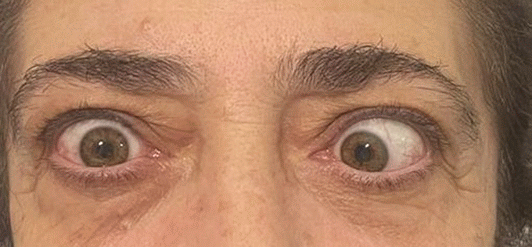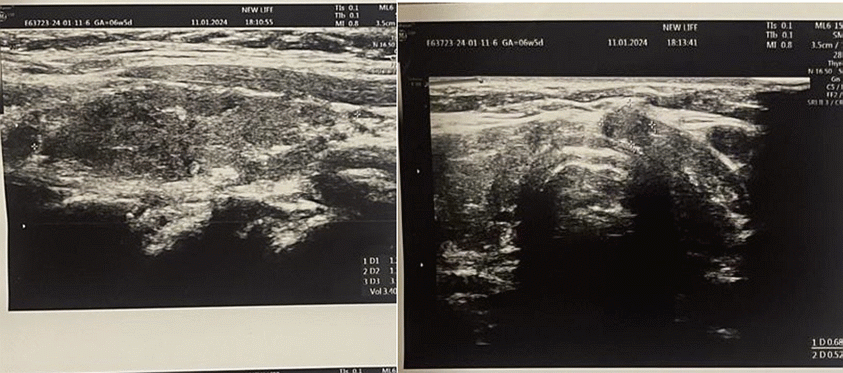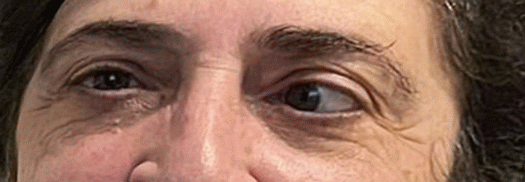ETA2024 Poster Presentations Case reports (9 abstracts)
Patient concurrent hashimoto thyroiditis, hypothyroidism and graves orbitopathy
Teona Kandinashvili
Clinic New Life, Endocrinology, Tbilisi, Georgia
A 58-year-old woman presented left eye twitching, diplopia. irritation and conjunctival and periorbital edema, also left exophthalmos. Her medical history revealed a recent diagnosis of Hashimoto thyroiditis and hypothyroidism, for which she had been prescribed levothyroxine 50 mg daily for one month. Patient present test result, which she made 1 month ago.

TSH- 8,4266Uu/ml (0,350-5,500)
FT4-8.10 ng/l (7,0-14,8)
FT3-3,15pg/Ml (1,71-3,710)
Anti-tpo- 1736UI/ml <=5,61
Anti –tg-5,51UI/ml <=4,11
Additionally, she was a tobacco user. She also said that sometimes had tachycardia. Patiens also said that in the evening, exophthalmos appeared in both eyes. Considering the symptoms, repeat the analysis of hormones, antibodies, Also additionally ultrasaund of thyroid and thyrotropin receptor antibodies (Anti-tshr), brain CT, CRP.

Subsequent results indicated: 1. suppressed TSH levels (0.06 IU/ml),
2. Elevated FT3 -4.77 pg/ml, reference range-2,30-4,20 pg/Ml,
3. FT4 -1.38 ng/dl. Reference range -0,89-1,76ng/dl.
4. Anti-thyroid peroxidase antibodies (Anti-TPO) greater than 1300.0 IU/ml
5. Anti-thyroglobulin antibodies (Anti-TG) at 5.90 IU/ml1
6. Anti-TSHR - 16.3. Positive->1,5.
CRP in normal reference range.
Thyroid ultrasound - high blood flow of gland, hyper and hypoechogenic areas, total volume of thyroid -8,5 cm 3, in isthmus one nodule solid and hypoechoic, size-6,8 × 5,2 MM. TI-RADS 2. Imaging studies, including a CT scan of the brain, showed no abnormalities.
Thyroids ultrasound:


Given the diagnosis of graves diseases, the patient discontinued levothyroxine and commenced treatment with thionamide (thiamazole) 5 mg, beta-blockers, selenium, artificial tears and intravenous glucocorticoid (500 mg weekly for 6 weeks, followed by 250 mg weekly for the next 6 weeks for graves orbitopathy. Smoking cessation was strongly advised. Gave recommendation to after one month control ft4, Tsh. After one month, the patient’s symptoms resolved, and follow-up tests showed: elevated TSH (37.28 IU/ml) and decreased FT4 (0.669 ng/dl), indicative of hypothyroidism. Thionamide was discontinued, and levothyroxine 50 mg was resumed for two weeks. After two week control, tsh, Follow-up TSH levels were within the target range (3.07 IU/ml), stopped take of levothyroxine and intravenous glucocorticoids was continued according to the scheme. Next consultations exophthalmos, diplopia. Irritation, conjunctival and periorbital edema was no presenting. Summary, Hashimoto’s thyroiditis and Graves’ orbitopathy are distinct diseases. While it is possible for an individual to have both conditions concurrently, such occurrences are exceedingly rare.







